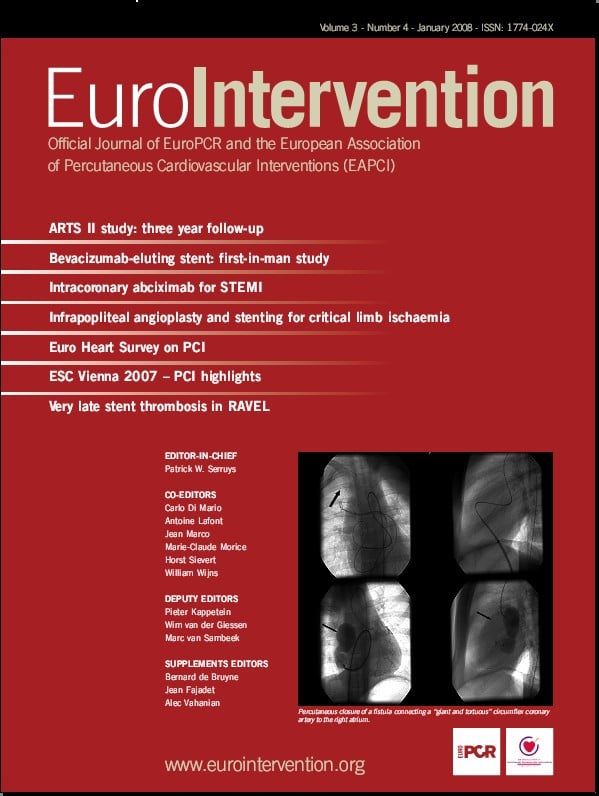Dear Colleagues,
There are many ways to gauge the maturity of a speciality and one of them – perhaps not the most reliable – is the amount of publications that exist in that field. If this is the case, then we certainly have come of age, if only you were to look at the current expansion of EuroIntervention, and the recent creation in the United States of two journals, JACC Intervention and Circulation Intervention.
But in this modern world it is not just through our loyal competition that we, or our profession are judged, nor is this measuring of our value strictly left to our peers, but by our ability to be referenced on PubMed...and for the moment we are not. However, we have again proffered our candidacy, and asked them to re-consider a decision that was, if nothing else, very close the first time we were considered, just short of what was necessary to be accepted, with a score of 2.5 out of 5.
This time we are deeply honoured by our colleagues throughout the speciality who have written in support of our candidature, freely joining their names to our request: Frans van der Werf, Editor-in-Chief of the European Heart Journal and Chairman of the Publications committee of the European Society of Cardiology; Kim Fox, President of the European Society of Cardiology (ESC) and former Associate Editor for Heart; William Wijns, President of the European Association of Percutaneous Cardiovascular Interventions (EAPCI) and Chairman of the ESC Committee for European Relations and Board Member of the World Heart Foundation; Spencer B. King III, Editor himself of our distinguished competition, JACC Cardiovascular Medicine, and Professor emeritus at Emory University and Valentin Fuster, Editor-in-Chief, Nature Clinical Practice Cardiovascular Medicine. With friends like these, and your own continued support, I can only say that I am confident for the future – and not just concerning our ability to be listed on PubMed.
Invitation for the Special Session
And it is a future that is truly growing in the best possible sense, rich in opportunities for you and ourselves to present new and challenging work. EuroIntervention will participate in the next EuroPCR for the first time with our own dedicated session, and one of the highlights of this session will be you: from those articles accepted up until the 25th of February for publication in the journal, six will be chosen for oral presentation, publicly by their authors during this session before a distinguished panel of experts.
How should I treat it?
At the same time, the journal, and our complementary website, will be evolving with a new feature, another way of working with, and learning from, case reports. Dubbed “How should I treat it?”, an accepted case report will be presented without its conclusion. The description and diagnostic components will be provided, and then an external expert will be invited to comment on how he or she would manage the particular case. You will be invited to respond as well. We will then, of course, publish the actual outcome of the particular case.
We hope that by doing this we can further encourage an interactivity and an ongoing dialogue between ourselves and our readers. Join us then as we examine the different ways of approaching specific cases, and join us as well, submitting your papers, participating as readers, and being with us, in May, at our new dedicated session.
Thank you.

